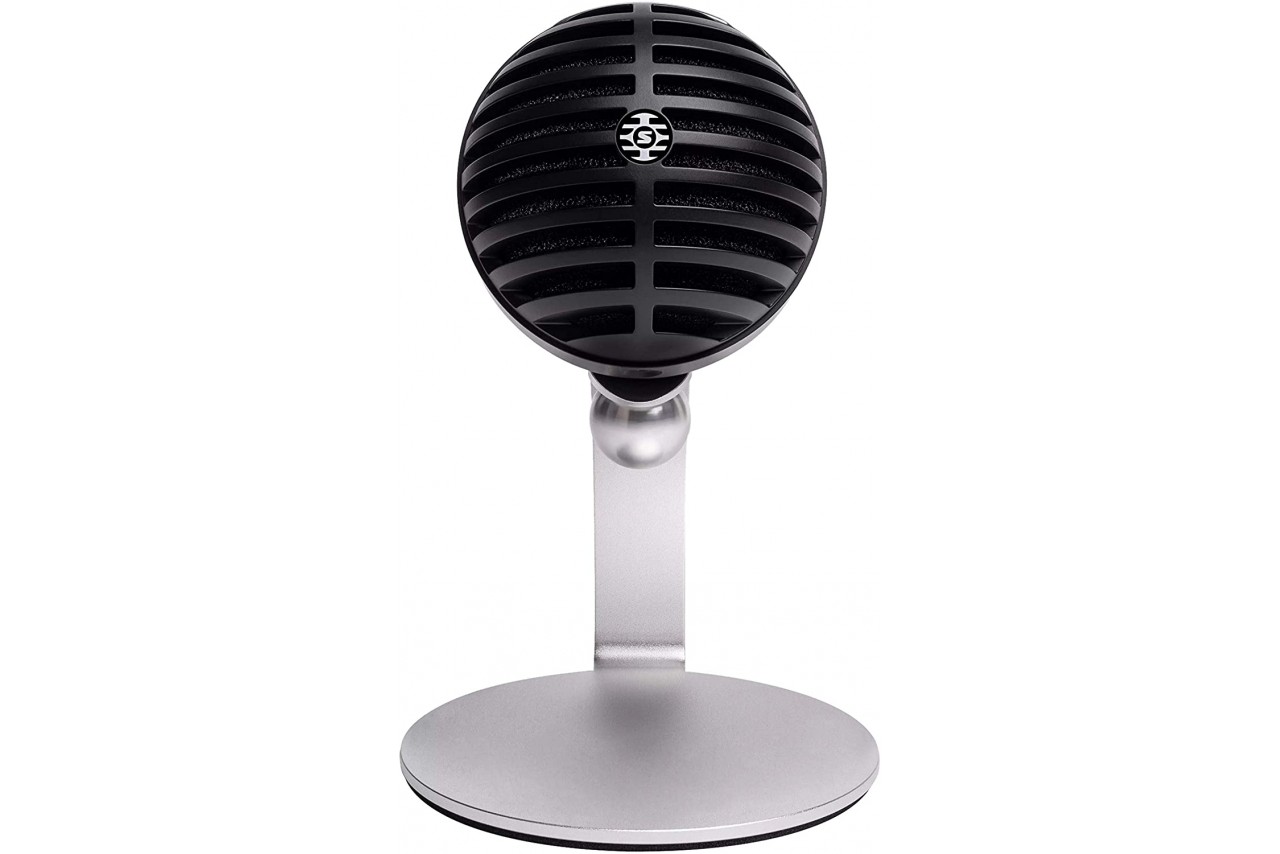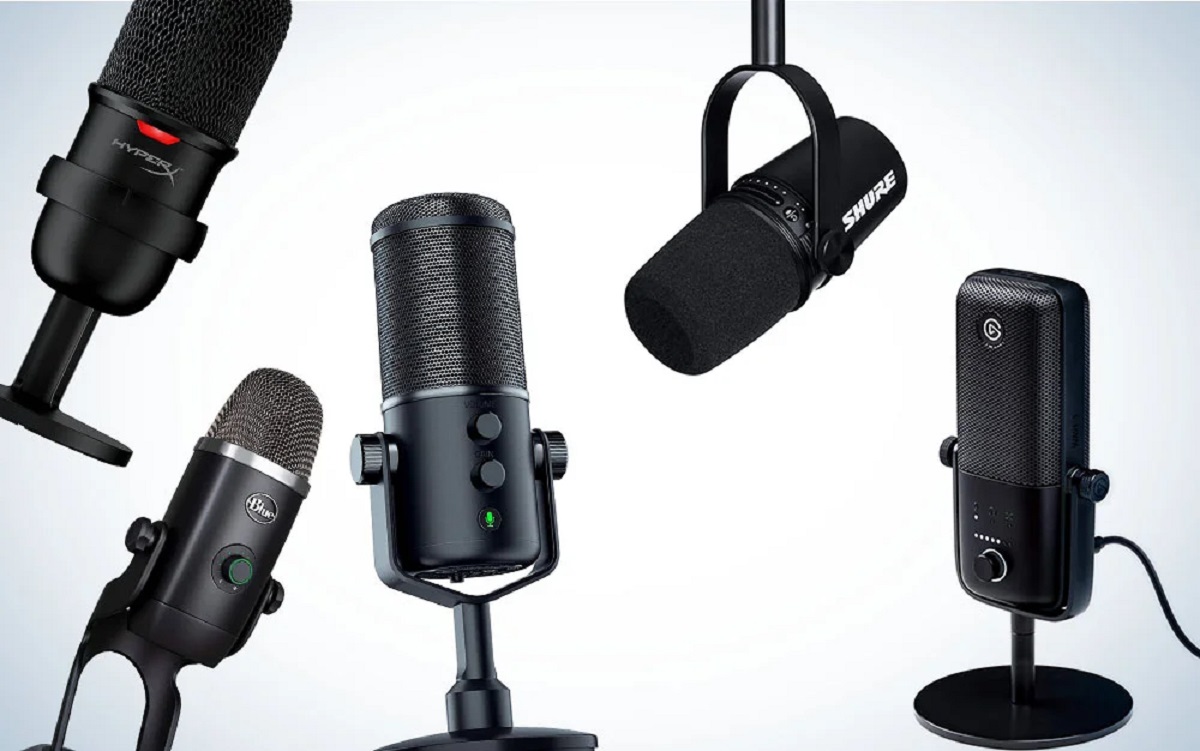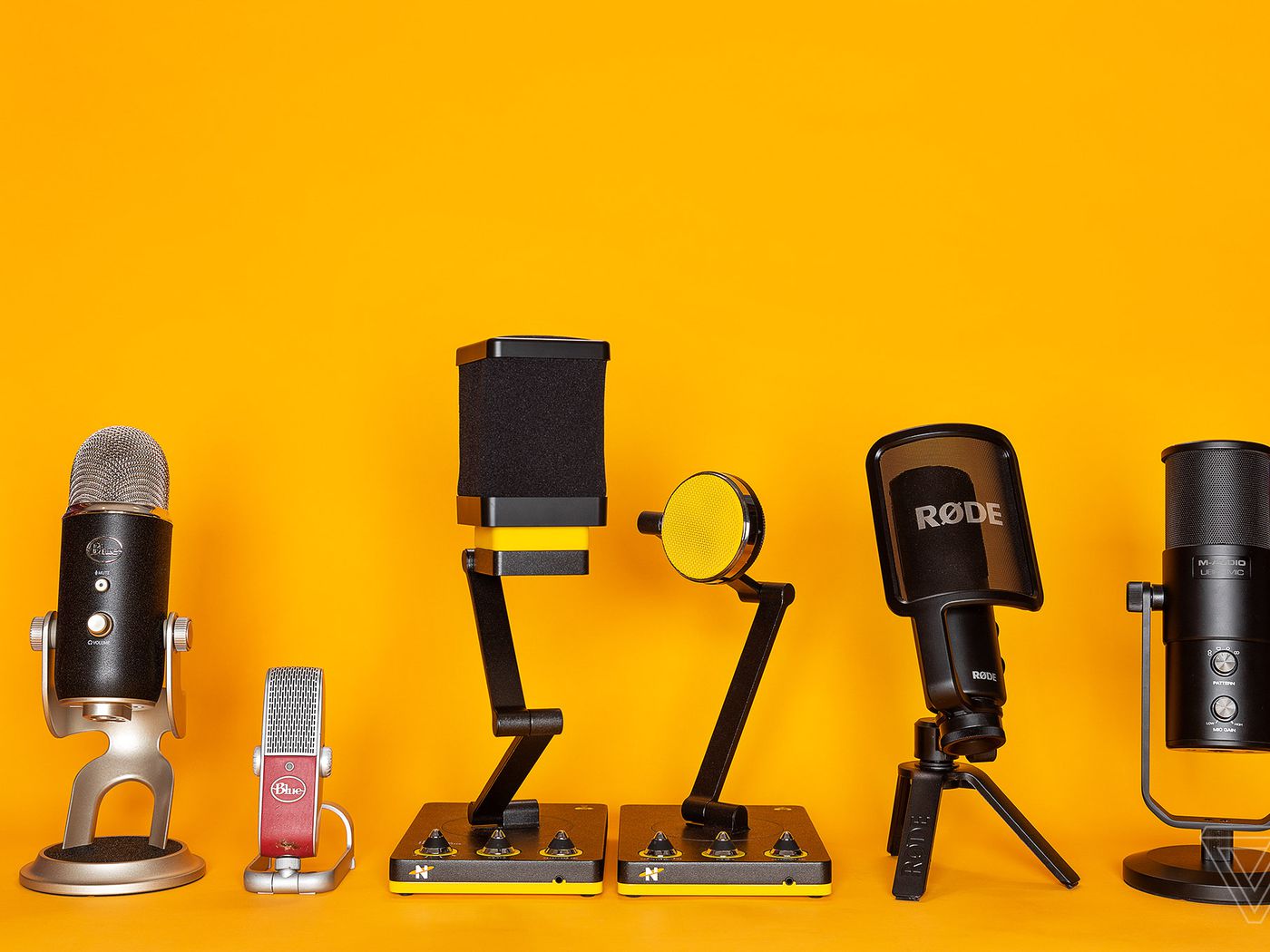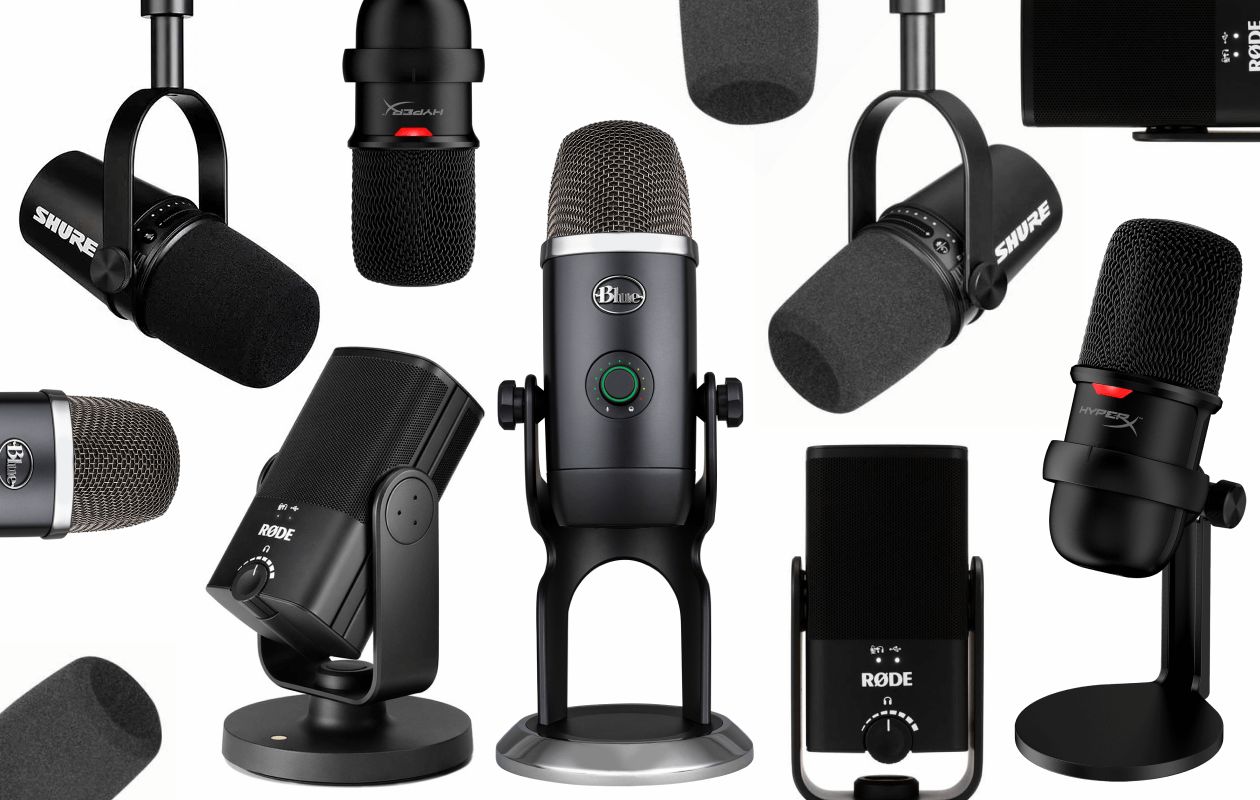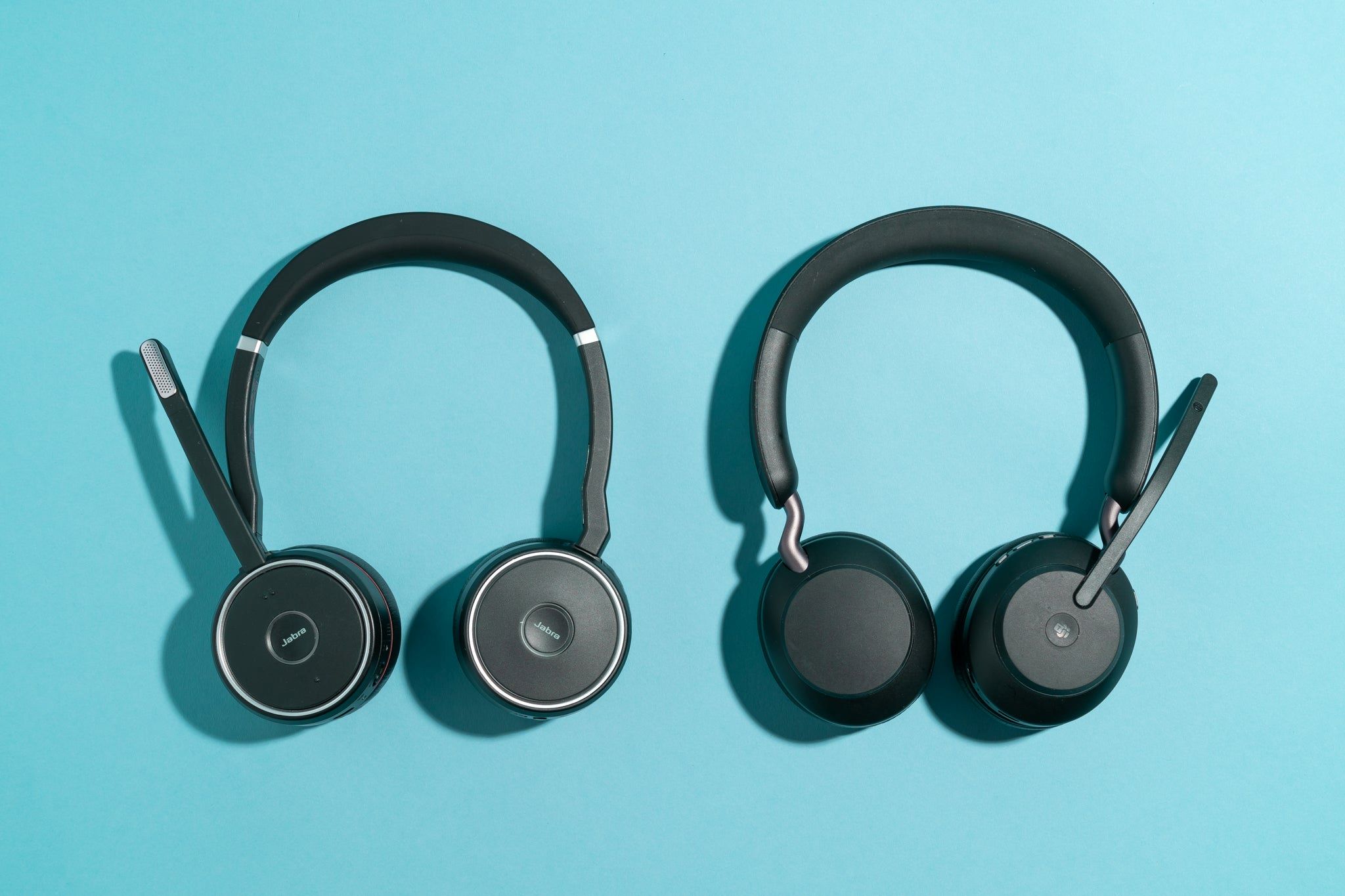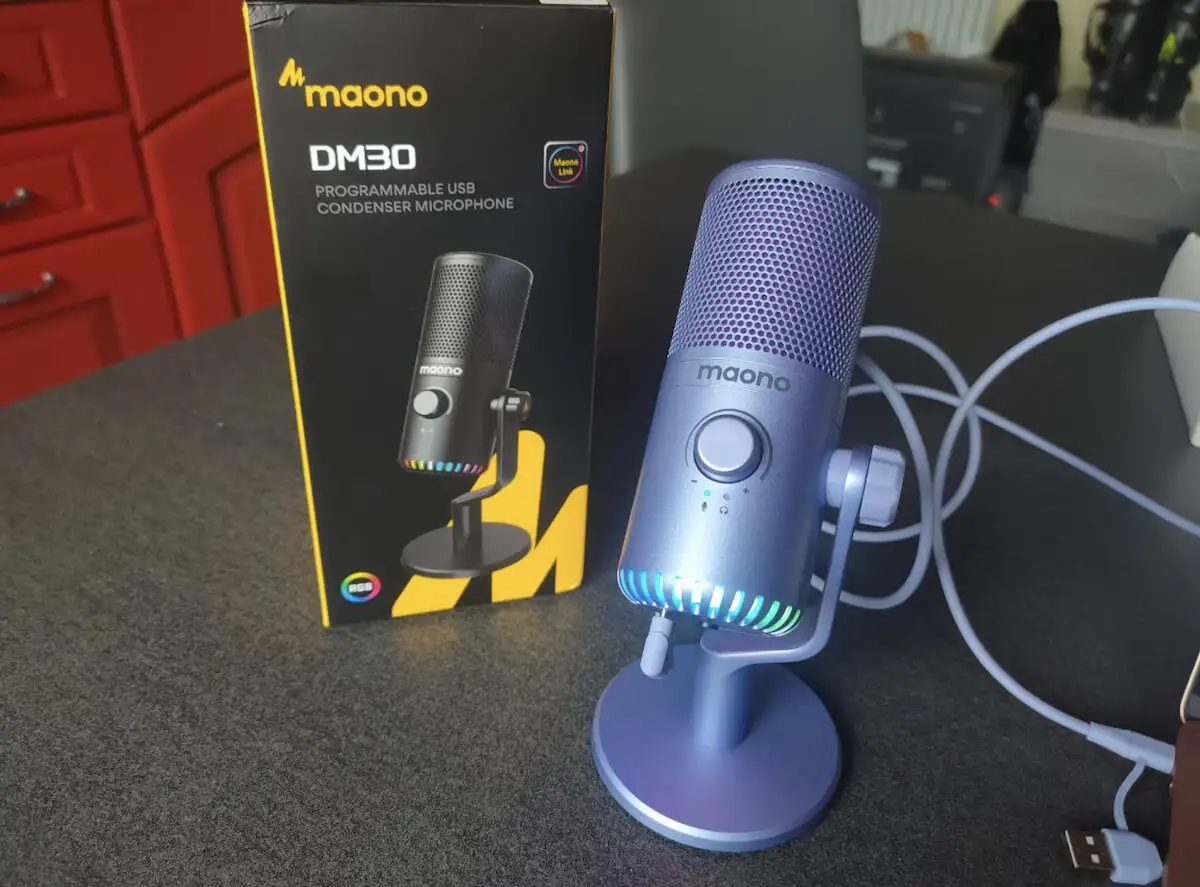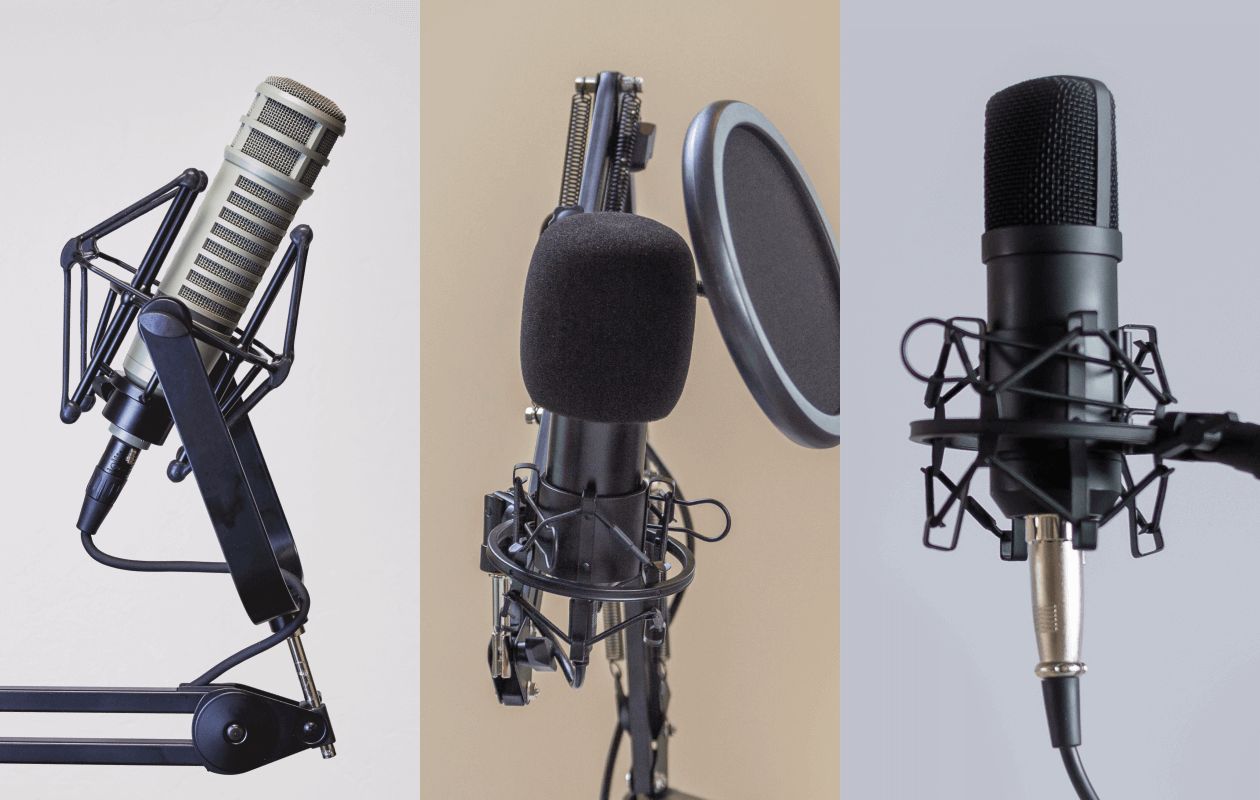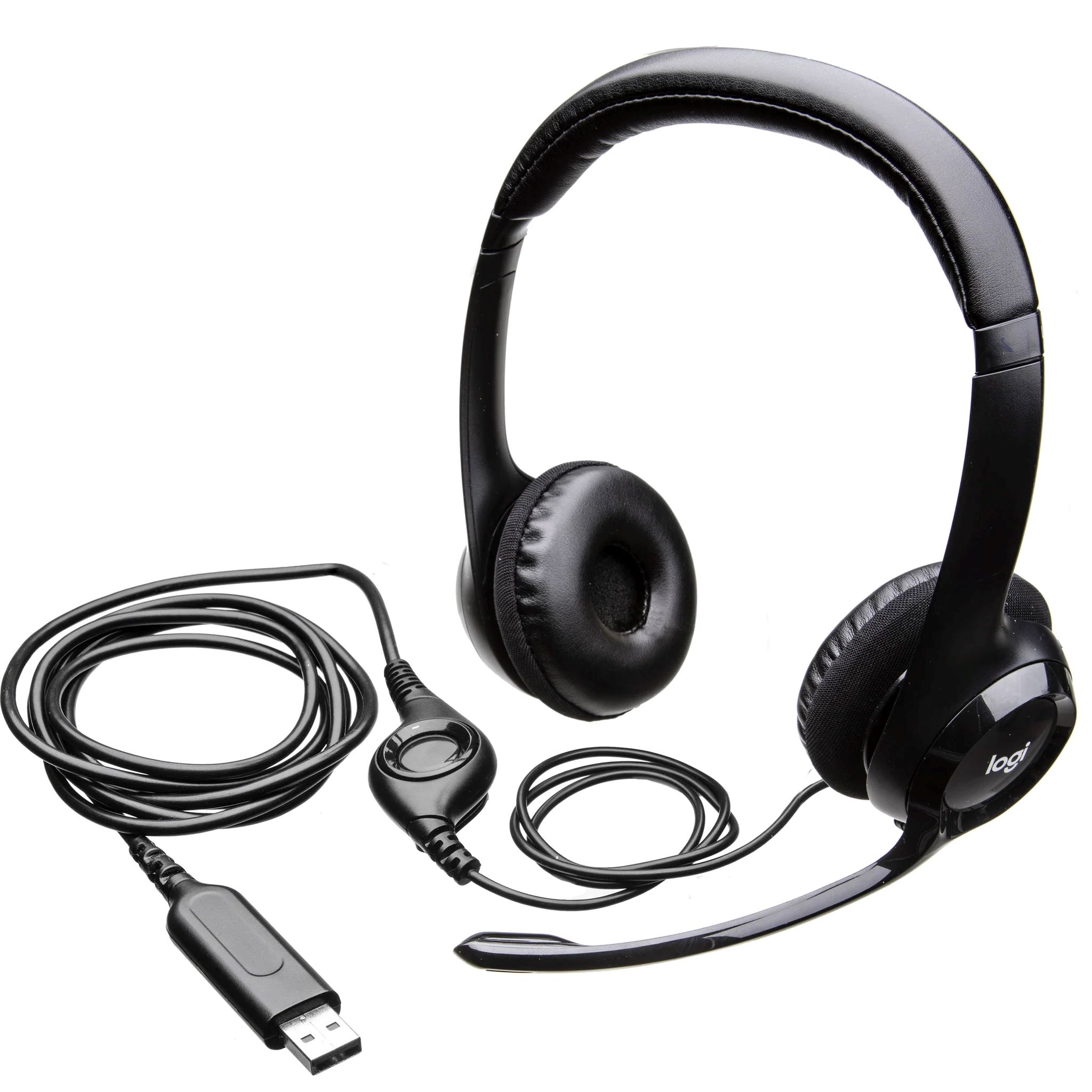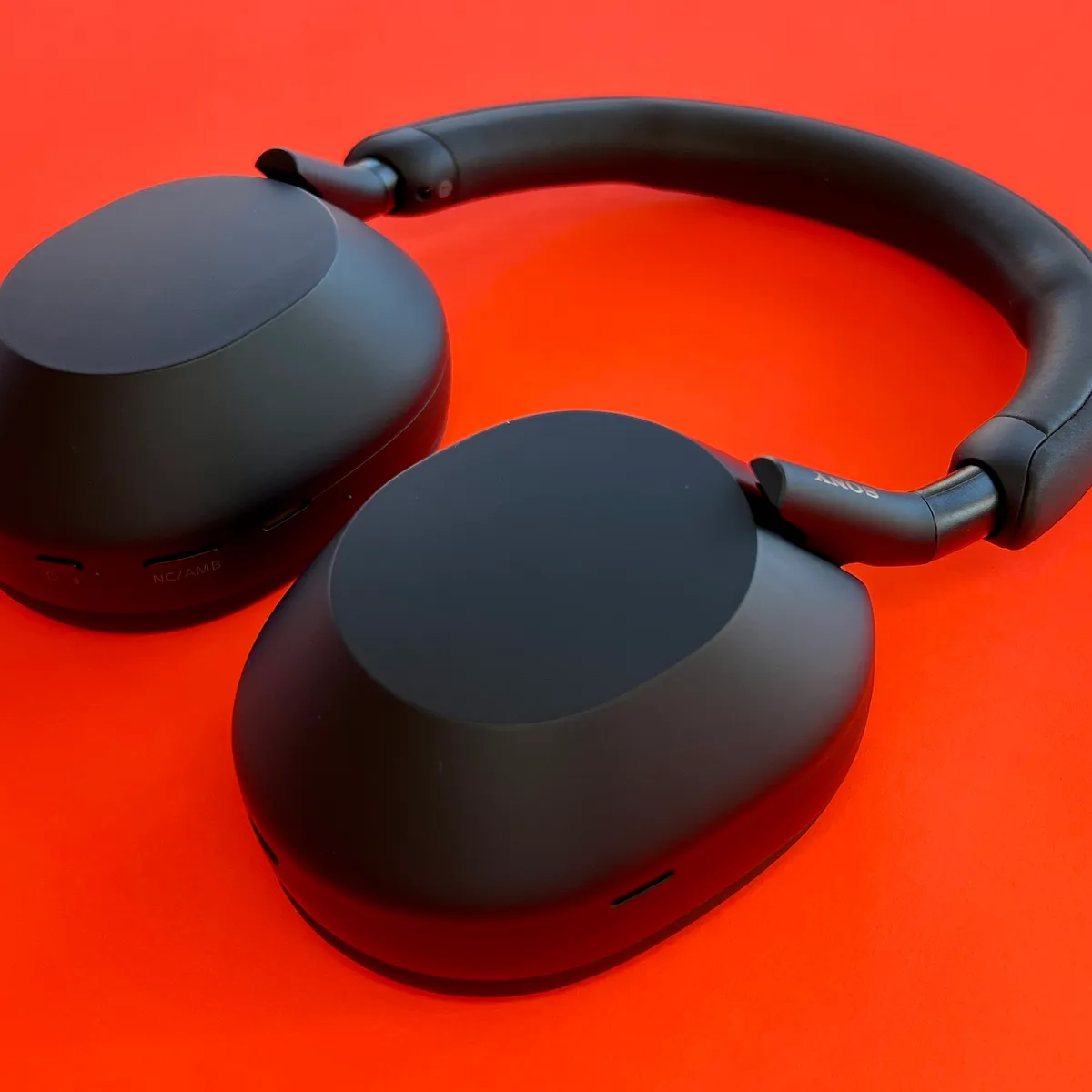Introduction
Understanding the Basics of USB Microphones
USB microphones have become increasingly popular in the world of audio recording, podcasting, and video conferencing. These devices offer a convenient and efficient way to capture high-quality audio without the need for complex setups or specialized equipment. Whether you are a content creator, musician, or business professional, understanding how USB microphones work can greatly benefit your audio recording endeavors.
In this article, we will delve into the inner workings of USB microphones, exploring their components, functionality, and the advantages they offer over traditional microphones. By the end of this article, you will have a comprehensive understanding of USB microphones and be equipped with the knowledge to make informed decisions when choosing the right USB microphone for your specific needs.
USB microphones are a testament to the advancements in audio technology, providing users with a plug-and-play solution for capturing crystal-clear sound. With their simplicity and versatility, USB microphones have revolutionized the way individuals and professionals approach audio recording and communication. Let's embark on a journey to unravel the mechanics and benefits of USB microphones, shedding light on how these compact yet powerful devices operate and enhance the audio recording experience.
What is a USB Microphone?
A USB microphone is a type of microphone that connects to a computer or other compatible device via a USB (Universal Serial Bus) port. Unlike traditional microphones that require an audio interface or mixer for connectivity, USB microphones are designed with built-in analog-to-digital converters, allowing them to directly interface with digital devices without the need for additional hardware.
These microphones are widely used for various applications, including voice recording, podcasting, live streaming, video conferencing, and music production. Their plug-and-play functionality makes them incredibly user-friendly, eliminating the complexities associated with setting up traditional microphones and audio interfaces.
USB microphones come in a variety of designs, including handheld, desktop, and studio condenser models, catering to different recording needs and environments. They offer a convenient and cost-effective solution for capturing high-quality audio, making them popular among content creators, musicians, broadcasters, and professionals seeking reliable audio input devices.
With the proliferation of remote work and digital content creation, USB microphones have become essential tools for individuals and organizations looking to achieve professional-grade audio recordings without investing in extensive audio equipment. Their compatibility with a wide range of devices, including laptops, desktop computers, and tablets, makes them versatile and adaptable to diverse recording scenarios.
USB microphones have democratized audio recording, enabling enthusiasts and professionals alike to pursue their creative and communicative endeavors with ease. As we delve deeper into the mechanics of USB microphones, it’s important to grasp their fundamental purpose and the convenience they bring to the world of audio capture and communication.
How Does a USB Microphone Work?
Understanding the inner workings of a USB microphone involves unraveling the process through which analog sound waves are converted into digital signals and transmitted to a connected device. Unlike traditional microphones that rely on XLR cables and audio interfaces, USB microphones integrate analog-to-digital converters within their housing, streamlining the audio capture process.
When sound waves enter the microphone through the diaphragm, they are converted into electrical signals, a fundamental process that occurs in all types of microphones. However, in the case of USB microphones, these electrical signals are then transformed into digital data within the microphone itself, thanks to the built-in analog-to-digital converter.
Once the analog signal is digitized, it is transmitted through the USB cable to the connected device, whether it’s a computer, tablet, or smartphone. The digital data is then processed by the device’s sound card or audio interface, where it can be further manipulated, recorded, or transmitted in real time.
USB microphones are designed to be plug-and-play devices, meaning that once they are connected to a compatible device, they are automatically recognized and configured without the need for additional drivers or software installation. This seamless integration simplifies the recording process, making USB microphones accessible to a wide range of users, regardless of their technical expertise.
Furthermore, USB microphones often feature headphone jacks for direct monitoring, allowing users to listen to their recordings in real time without latency issues. This feature is particularly valuable for podcasters, musicians, and voice-over artists who require immediate feedback on their recordings.
By leveraging the power of USB connectivity and integrated digital conversion technology, USB microphones offer a straightforward and efficient solution for capturing high-fidelity audio. Their ability to bypass the complexities of traditional audio setups while delivering professional-grade sound makes them indispensable tools for modern content creators and communicators.
Components of a USB Microphone
A USB microphone comprises several key components that work together to capture, process, and transmit audio data. Understanding these components is essential for gaining insight into the functionality and capabilities of USB microphones.
- Diaphragm: At the core of every microphone is the diaphragm, a thin membrane that vibrates in response to sound waves. This mechanical movement generates electrical signals that form the basis of the audio capture process.
- Preamp: USB microphones often incorporate a built-in preamplifier, or preamp, which boosts the low-level electrical signals from the diaphragm to a usable level. This amplification stage is crucial for ensuring that the captured audio maintains clarity and fidelity throughout the signal chain.
- Analog-to-Digital Converter (ADC): One of the defining features of USB microphones is the integrated analog-to-digital converter, which transforms the analog electrical signals into digital data. This conversion process is pivotal for enabling seamless compatibility with digital devices and software applications.
- USB Connector: As the name suggests, the USB connector serves as the interface between the microphone and the connected device. This standardized connection allows for easy plug-and-play functionality, eliminating the need for specialized audio interfaces or drivers.
- Headphone Jack: Many USB microphones are equipped with a headphone jack that enables direct monitoring of the captured audio. This real-time feedback mechanism is invaluable for ensuring optimal recording levels and performance without latency issues.
- Controls: Some USB microphones feature onboard controls for adjusting recording gain, headphone volume, polar patterns, and mute functions. These intuitive controls provide users with flexibility and convenience during recording sessions.
- Mounting Hardware: Depending on the microphone design, mounting hardware such as desktop stands, shock mounts, and boom arms may be included to facilitate stable positioning and reduce unwanted vibrations and handling noise.
By comprehending the role of each component, users can appreciate the technological sophistication and user-friendly design of USB microphones. These components collectively contribute to the seamless operation and exceptional performance that USB microphones are known for, empowering creators and communicators to achieve professional-grade audio recordings with ease.
Benefits of Using a USB Microphone
USB microphones offer a myriad of advantages that cater to the diverse needs of content creators, musicians, podcasters, voice-over artists, and professionals seeking high-quality audio capture solutions. Understanding the benefits of USB microphones illuminates their impact on modern recording practices and communication workflows.
- Plug-and-Play Convenience: One of the most significant advantages of USB microphones is their plug-and-play functionality. Users can simply connect the microphone to a compatible device, such as a computer or tablet, and start recording without the need for complex setups or additional hardware.
- Portability: USB microphones are often compact and lightweight, making them ideal for on-the-go recording sessions. Whether recording podcasts in different locations or capturing musical performances on the road, the portability of USB microphones enhances flexibility and creativity.
- Compatibility: With broad compatibility across various operating systems and devices, USB microphones offer versatility and accessibility. They can seamlessly integrate with Windows, macOS, and Linux systems, as well as iOS and Android devices, ensuring widespread usability.
- Cost-Effectiveness: USB microphones eliminate the need for additional audio interfaces or mixers, reducing the overall cost of setting up a recording environment. This cost-effective approach makes professional-grade audio recording more attainable for individuals and organizations with budget constraints.
- Real-Time Monitoring: Many USB microphones feature headphone jacks for direct monitoring, enabling users to listen to their recordings in real time. This immediate feedback loop enhances recording precision and performance, particularly in live podcasting and music production scenarios.
- User-Friendly Operation: The intuitive nature of USB microphones, coupled with onboard controls for adjusting recording levels and settings, makes them exceptionally user-friendly. This accessibility empowers users of all experience levels to achieve optimal recording results with minimal technical barriers.
- Professional Audio Quality: Despite their compact form factor, USB microphones are capable of delivering professional-grade audio quality, capturing clear and detailed sound with minimal noise and distortion. This level of performance is essential for maintaining the integrity of recorded content.
By leveraging these benefits, USB microphones have redefined the landscape of audio recording and communication, democratizing access to high-fidelity sound capture and empowering individuals and professionals to express their creativity and convey their messages with exceptional clarity and impact.
Tips for Choosing a USB Microphone
When selecting a USB microphone, considering various factors can help you make an informed decision that aligns with your specific recording needs and preferences. Whether you are a podcaster, musician, voice actor, or business professional, the following tips can guide you in choosing the right USB microphone for your endeavors:
- Consider Your Recording Environment: Assess the acoustic characteristics of your recording space. If you work in a quiet, controlled environment, a condenser microphone may be suitable for capturing detailed sound. In contrast, dynamic microphones are more adept at handling high-volume sound sources and mitigating background noise, making them ideal for live performances and dynamic recording scenarios.
- Understand Polar Patterns: Familiarize yourself with the polar patterns of microphones, such as cardioid, omnidirectional, and bidirectional. Different polar patterns offer varying degrees of sound pickup and directionality, allowing you to choose a microphone that suits your intended recording applications, whether it involves solo vocal performances, group discussions, or instrument capturing.
- Assess Frequency Response: Pay attention to the frequency response of USB microphones, as this characteristic influences the tonal balance and sonic characteristics of recorded audio. Understanding the frequency range and response curve can help you select a microphone that complements the tonal qualities of your voice or instruments.
- Evaluate Build Quality and Accessories: Examine the build quality of the microphone and any included accessories, such as shock mounts, pop filters, and desktop stands. Durable construction and essential accessories contribute to the overall usability and longevity of the microphone, enhancing your recording experience and setup convenience.
- Review Compatibility and Connectivity: Ensure that the USB microphone is compatible with your recording device, whether it’s a computer, tablet, or smartphone. Additionally, consider the availability of headphone monitoring, direct volume controls, and mute functions to enhance your recording workflow and performance.
- Seek User Reviews and Recommendations: Research user reviews and seek recommendations from fellow creators and professionals who have experience with the USB microphones you are considering. Real-world feedback and insights can provide valuable perspectives on the performance, reliability, and user experience of different microphone models.
- Set a Realistic Budget: Establish a budget that aligns with your recording goals and requirements. USB microphones are available across a wide price spectrum, and determining a realistic budget can help you narrow down your options and prioritize features that are essential for your recording endeavors.
By applying these tips, you can navigate the diverse landscape of USB microphones with confidence, selecting a microphone that not only meets your technical specifications but also enhances your creative expression and audio recording capabilities.







